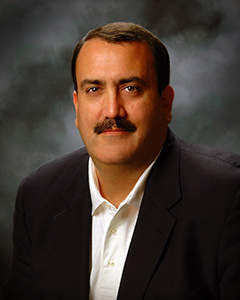
The goal of every music teacher is (or should be) to involve the maximum number of students in the music program. This starts with a well-thought-out recruiting and retention strategy that involves all disciplines within the program; band, orchestra, and choir. Teachers must cooperate to create a highly effective and complete program. Ancillary programs such as jazz band, specialized choirs, musicals, fiddle ensemble, rock band, guitar class, piano class, mariachi band, drum lines, and marching band all add to the fabric of a rich musical environment. Building a great program rests on three pillars: an effective recruiting and retention plan, a high-quality musical environment with great instructional leadership, and clear communication of your values and student successes to the community, school board, parents, and administrators.
1. Recruitment and Retention
Recruiting the maximum number of students for each program, orchestra, choir, and band, can and should be done cooperatively. The most successful programs are always strong in all three areas. This starts with a clear recruiting strategy that entices students and parents to participate. Fortunately, a number of fine resources are available.
String Clinics to Go: The Art of Recruiting by myself and Bob Gillespie has helped teachers increase their starting numbers in significant ways over the last fifteen years. A new and incredibly exciting set of materials was unveiled last year by inspirational speaker Scott Lang. The series, Be Part of the Music, can be viewed at scottlang.net and bepartofthemusic.org. You can also visit bepartoftheorchestra.org and bepartoftheband.com for discipline-specific information. Scott has created a complete set of recruiting materials that include videos, letters, and strategies. Be Part of the Choir will be released soon. Thousands of additional music students have been added nationally since the inception of this program two years ago.
Retaining students is an ongoing process that requires careful thought and planning. The first step is to know the exact dates students will be presented with registration materials for upcoming school years. In most high schools this occurs in January with middle school following in February and elementary students in March. It is critical that you present students with a comprehensive retention program in advance of the distribution of the general scheduling materials. This should include identifying possible student issues and offering pro-active solutions. These may include schedule problems, extra-curricular conflicts, and any others issues that prevent students from re-enrolling in music.
Once this has been done it is extremely important to survey the students and use that data to help students make informed choices. I always asked students to indicate: 1) yes, I am continuing, 2) I am not sure, or 3) no, I will not be continuing. The “undecided” responses offer a great opportunity for you to talk to them and find out what the issues are.
In my own career, I asked students about my teaching, the atmosphere of the class, what they were learning, and anything else that I thought would help me to be a more effective teacher. I would also put their responses into different categories to see if I could discover any patterns. An example would be athletes versus non-athletes, economic status, ethnicity, gender, or college prep versus non-college prep. What I wanted to know was, were there any certain populations that were dropping out disproportionately. If so then I knew I needed to look at the program and my teaching. It could also point out a schedule problem or other community factors. Armed with this information I could more intelligently guide students and help them continue in the program.
2. A High-Quality Music Environment
Building a comprehensive music program happens over time. The richer the musical offerings, the more students there are that will find a home somewhere. The most important factor, however, is high-quality teaching and musical leadership. Sometimes the fastest way to grow your program is improve your knowledge base. I have been a teacher, clinician, writer/composer for forty years and I am constantly trying to learn new things and improve my skills. Education is a non-stop process for both students and teachers. Great music programs always have great leaders. People who put students first and are constantly trying to improve the musical environment for the entire community increase the number of students involved.
3. Communication
The last pillar involves communicating the success and values of the program to the community, school board, parents, and administrators. Make sure you view every performance as an opportunity to do just that. Concerts can be informances as well as performances. Explain what you doing and why. Have students talk about and reflect upon their experience. Have students play at board meetings and throughout the community at large. Be an artistic presence in your school area.
It is important to communicate with administrators and school boards. One very powerful way to do this is to create an annual “State of the Music Department” report. This type of report will speak volumes to both these groups, and was pioneered by music advocacy expert John Benham.
Benham’s theory of reverse economics has saved hundreds of school music programs throughout the country. It suggests that music is often cheaper to teach than other disciples because of our larger class sizes. More importantly, it states that when you cut elementary programs it doesn’t save you money but cost more because of how it affects your middle school and high school numbers in subsequent years. For more information read his book Music Advocacy and visit supportmusic.com.
When communicating with administrators, the most important data point is the per-student cost of instruction versus other areas of the school. Below are some additional points to consider, based on Benham’s work.
List honors and awards of student and faculty:
- Solo and ensemble
- Professional awards
- Festivals
- Non-music awards of students and faculty
List of and number of performances of each music ensemble:
- Curricular performances (in school day)
- Co-curricular performances (outside school day)
- Extra-curricular performance/activities (primarily public service or public relations)
- List of offerings at each grade in curricular, co-curricular and extra-curricular areas
List by ensemble or grade level:
- Average G.P.A. of music students
- Average scores on SAT, ACT, and other relevant tests (District report card)
- Participation in other school activities (honor society, athletics, etc.) –survey students
- Number of students by grade, building, and area (band, choir, orchestra, general)
- Percent of student participation compared to number in overall class by grade and area (band, choir, orchestra, general)
- Total music numbers across disciplines
- Percentage of total music students compared to total enrollment
- Maximum number and percentage of students possible with current staff
- Percent of attrition by grade and area (band, choir, orchestra, general)
- Budget over time, music versus academic, where is the money going
Faculty – list data by ensemble, grade level, discipline:
- Student/Faculty Ratios (SFR), based on actual enrollments in music – teacher track
- Student/Faculty Ratios by curricular area and grade level in other subjects
- Average FTE value of music faculty, based on actual teaching loads and student enrollment, as compared with non-music instructors
- Cost per student for faculty
- Cost per student of total music budget
- Breakdown of Individual Faculty Loads (FTE) by area
Building a great music program happens by design. If the music staff works cooperatively with each other then everyone wins. It starts with recruiting and retention, is followed with great teaching and leadership, and finishes with clear communication to build a broader arts coalition.
 Pedagogue, composer, and teacher trainer, Bob Phillips is an innovator in string education. During his 27 years of teaching strings in Saline, Michigan, Bob built a thriving string program of over 700 students and was honored as teacher of the year 9 times by regional, state and national organizations. A recognized expert in the use of large group pedagogy and alternative styles, he has presented clinics throughout North America, Europe, and Australia. Phillips has authored over 19 book series that include 130 books for use in the classroom including Alfred’s revolutionary new method, Sound Innovations for String Orchestra and Sound Innovations for Concert Band as well as the groundbreaking Philharmonic series. He has had over 140 works published for orchestras and bands and is an award-winning ASCAP composer. His conducting resume includes professional, all-state, and youth orchestras. Currently the director of string publications for Alfred Music and the past-president of ASTA, he was inducted into the University of Michigan School of Music Hall of Fame in 2013. Bob and his wife, Pam are also part of the creative team for Barrage 8.
Pedagogue, composer, and teacher trainer, Bob Phillips is an innovator in string education. During his 27 years of teaching strings in Saline, Michigan, Bob built a thriving string program of over 700 students and was honored as teacher of the year 9 times by regional, state and national organizations. A recognized expert in the use of large group pedagogy and alternative styles, he has presented clinics throughout North America, Europe, and Australia. Phillips has authored over 19 book series that include 130 books for use in the classroom including Alfred’s revolutionary new method, Sound Innovations for String Orchestra and Sound Innovations for Concert Band as well as the groundbreaking Philharmonic series. He has had over 140 works published for orchestras and bands and is an award-winning ASCAP composer. His conducting resume includes professional, all-state, and youth orchestras. Currently the director of string publications for Alfred Music and the past-president of ASTA, he was inducted into the University of Michigan School of Music Hall of Fame in 2013. Bob and his wife, Pam are also part of the creative team for Barrage 8.